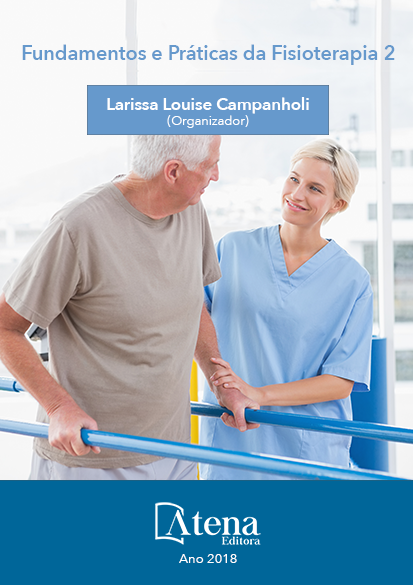
IMPACTO DO TEMPO DE ATIVIDADE FÍSICA DE IDOSOS SOBRE A FORÇA MUSCULAR RESPIRATÓRIA: UM ESTUDO DE CASO
O processo de envelhecimento
apresenta como uma de suas consequências
o declínio na força dos músculos esqueléticos
e bem como dos respiratórios. O objetivo
deste estudo foi correlacionar a força muscular
respiratória de idosos ativos e que possuem nível
cognitivo significativo, com o valor esperado para
sua idade e com o tempo de prática de atividade
física. Os critérios de inclusão utilizados para
a seleção da amostra foram: nível de cognição
preservados, sem história de doença respiratória
crônica. Foram excluídos da pesquisa idosos
que possuíam idade superior a 80 anos, os que
possuíam déficit cognitivo e os participantes
que apresentaram contra indicação ao uso
da manovacuometria. Pode-se observar que
57,1% (n=16) possuem um tempo de atividade
no CASI entre 3-10 anos e 42,9% (n=12)
possuem uma afluência menor, entre 1 mês e
2 anos. Como nota-se nas tabelas 02 e 04, do
sexo masculino, a PImáx encontrada e o valor
previsto apresentam-se de forma semelhante,
não há diferença estatisticamente significativa.
Dessa forma, esses valores se mantêm
imutáveis, pois os mesmos encontrados são
estatisticamente semelhantes aos esperados
em um envelhecimento saudável. Na tabela
05 que demonstra as mesmas variáveis, mas
em mulheres, também se obteve valores
significativamente semelhantes. E na tabela 03
nota-se que as maiores variações acontecem
nos indivíduos que possuem uma frequência
de menos anos no centro. Observou-se que a
FMR dos idosos é influenciada pela prática de
exercício físico. A prática regular pode ser uma
ferramenta, retardando os comprometimentos
adquiridos com o envelhecimento
IMPACTO DO TEMPO DE ATIVIDADE FÍSICA DE IDOSOS SOBRE A FORÇA MUSCULAR RESPIRATÓRIA: UM ESTUDO DE CASO
-
DOI: atena
-
Palavras-chave: Força muscular respiratória. Atividade física. Envelhecimento.
-
Keywords: Respiratory muscle strength. Physical activity. Aging.
-
Abstract:
The aging process presents as
one of its consequences the decline in the
strength of the skeletal muscles as well as of the
respiratory muscles. The objective of this study
was to correlate the respiratory muscle strength
of active elderly individuals with significant cognitive level, with the expected value for
their age and the time of physical activity practice. The inclusion criteria used for sample
selection were: level of cognition preserved, with no history of chronic respiratory
disease. Older people who were older than 80 years, those who had cognitive deficits,
and those who presented with contraindications to the use of manovacuometry were
excluded from the study. It can be observed that 57.1% (n = 16) have a time of activity
in the CASI between 3-10 years and 42,9% (n = 12) have a smaller affluence, between
1 month and 2 years. As can be seen in tables 02 and 04, males, the MIP found
and the predicted value are similar, there is no statistically significant difference. Thus,
these values remain unchanged, since they are statistically similar to those expected
in healthy aging. Table 5 shows the same variables, but in women, similar values were
also obtained. And in table 03 it is noticed that the greater variations happen in the
individuals that have a frequency of less years in the center. It was observed that the
FMR of the elderly is influenced by the practice of physical exercise. Regular practice
can be a tool, delaying the commitments acquired with aging.
-
Número de páginas: 15
- Francisco Robson de Oliveira Alves
- Eduardo de Sousa Monteiro
- Maria Letícia de Oliveira Morais
- Telmo Macedo de Andrade
- Cibelle Maria Sampaio Alves


